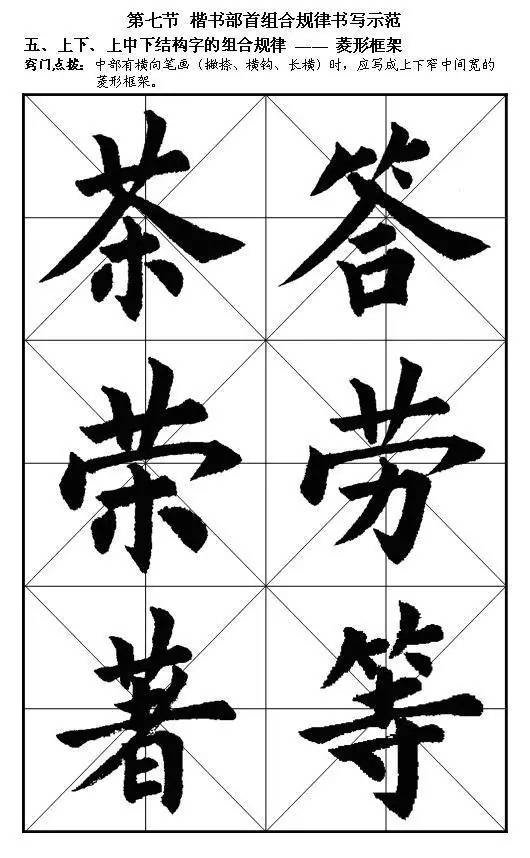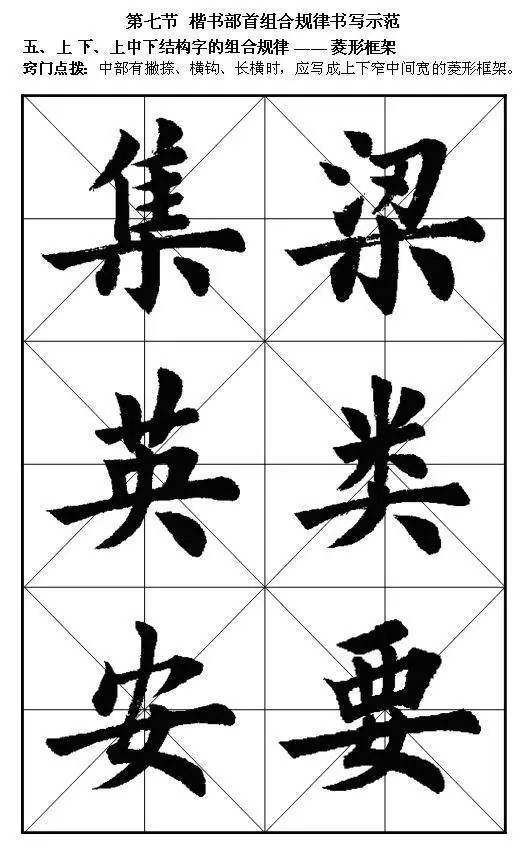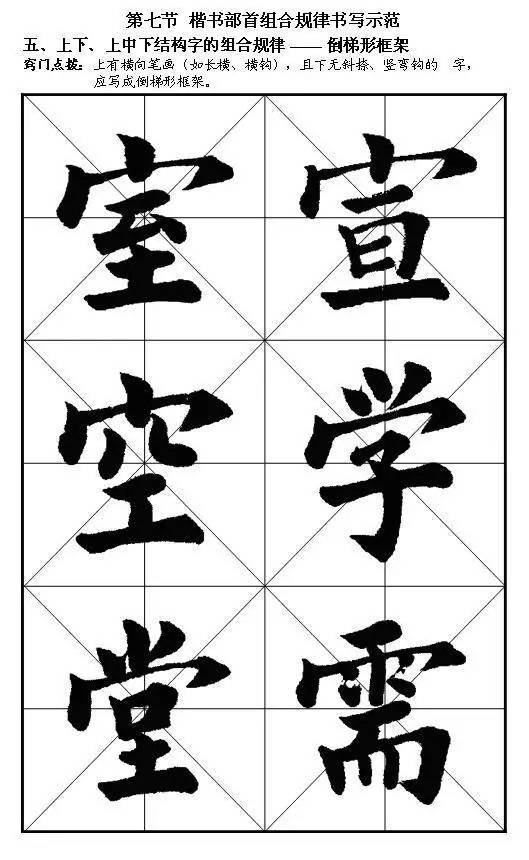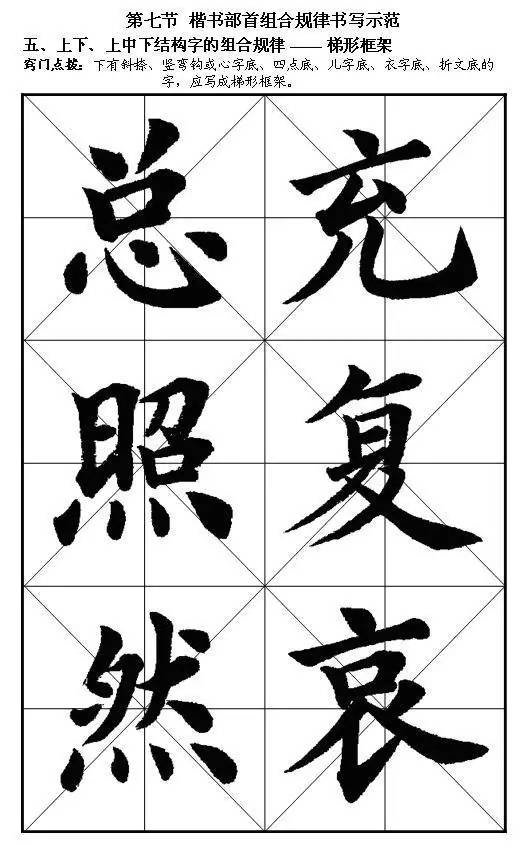1. Combination rules of left and right structural words
(1) The law of width and narrowness ratio of left and right structural characters
In most cases, the left radical of left and right structural characters accounts for 1/3 and the right radical accounts for 2/3. This is because the main pen (horizontal main pen, such as long horizontal, oblique stroke, flat stroke, oblique hook, vertical curved hook, horizontal folding hook, etc.) Vertical folds, folding hooks, etc.) are generally in the right radical, so the right radical takes up a larger proportion of space.
There is another situation, that is, when the left radical has more strokes than the right radical, and the right radical does not have a horizontal main stroke, the left radical can be written wider, or even exceed the width of the right radical. Such as: Ying, Dao, Nai, Bu and other words.
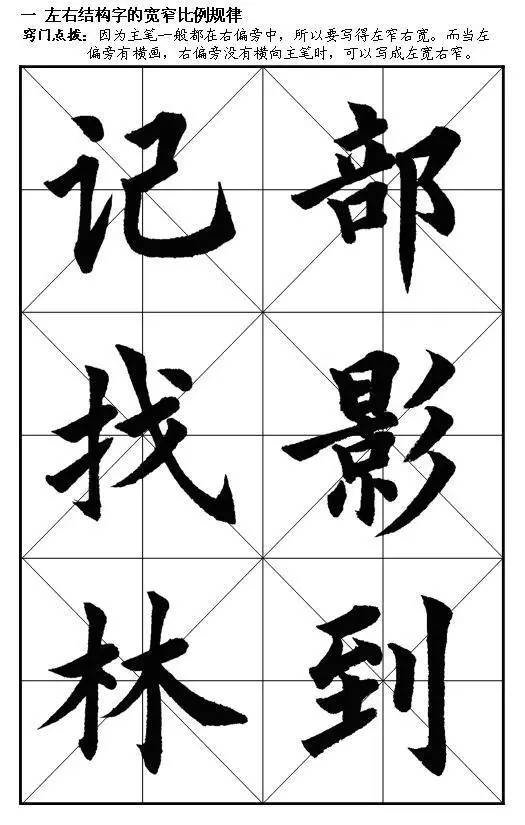
(2) The rules of height changes of left and right structural words 1 and 2
Of course, to write characters with a left-right structure well, it is not enough just to master the rules of width-to-narrow ratios. In addition to the several stroke combination rules mentioned above, there are more important rules at work here, that is, the size of the left and right radicals, The clever matching rules of length, height, and low are here called the rules of height changes of left and right radicals. Most beginners tend to write such characters evenly on the left and right, thinking that square Chinese characters should be written in a square shape to look good. Wang Xizhi once said: "...the top and bottom are straight, the front and back are flush, this is not a book,..." Therefore, Real regular script is rarely written in a square shape, and most of them are irregular in shape. Only in this way can the writing come alive.
The following are four situations:
1. When there are vertical strokes in the right radical, such as hanging needles, vertical hooks, oblique hooks, upper vertical strokes and lower vertical strokes, or the left is small and the right is large, it should be written as up high and down low.
The left radical of this type of character should not be too long. It should be restrained and leave room. The focus is to highlight the vertical length of the right radical.
2. Contrary to the above, if there are horizontal strokes in the upper and lower parts of the right radical, such as horizontal, horizontal fold, or left big and right small, it should be written as up, down, and high.
For this type of character, it is easy to write the right radical flush with the left radical or with the upper edge lower and lower edge flush, such as "Ren, Jiang" and other characters. The right radical should be compressed up and down and placed in the middle.
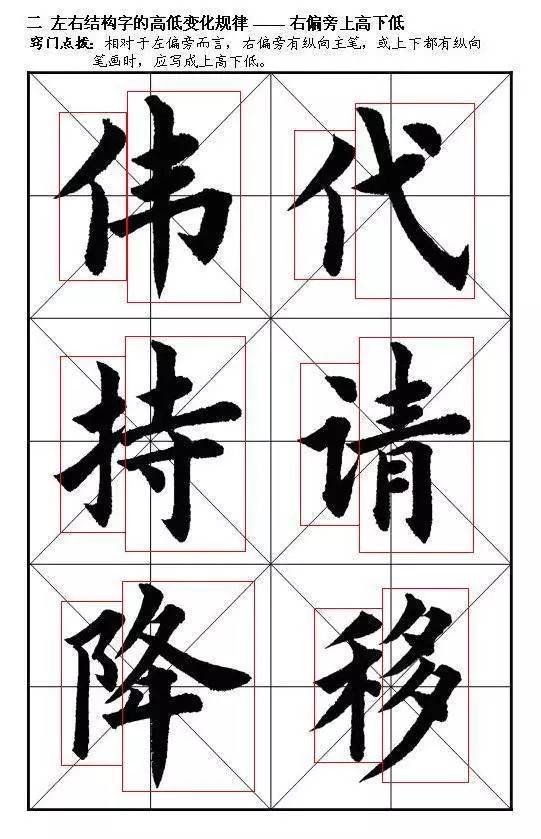
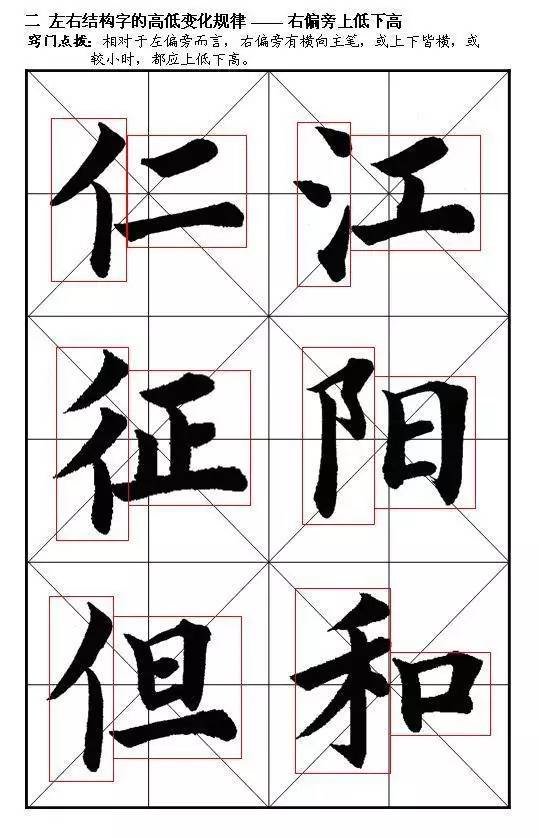
(3) The rules of height changes of left and right structural characters 3 and 4
3. When there are vertical strokes in the upper middle of the right radical, such as vertical and horizontal strokes, and horizontal strokes in the lower middle, such as long horizontal strokes, it should be written as top high and bottom high. It is easy to write this type of character with the right radical flush with the left or with the upper edge and lower edge flush. When writing, the left radical should sink slightly downward and the right part should rise upward, so that the whole character is in the middle of the grid and not too high.
4. When there are horizontal strokes in the upper middle of the right radical, such as horizontal and horizontal folds, and vertical strokes in the lower middle, such as vertical and vertical hooks, it should be written as Shang low, low. In this type of character, it is easy to write the right radical flush with the left radical, giving people the illusion that the right radical is extra high. Therefore, writing this kind of characters should be the opposite of rule 3. The left radical should be raised appropriately and the right radical should be lowered appropriately, so that the whole character is in the middle of the grid and not too low.
In order to facilitate beginners to master these four rules, they can be summarized in four words: the right radical should be horizontally contracted and vertically relaxed. That is, the horizontal strokes (horizontal, horizontal folds, and the horizontal parts of the strokes, flat strokes, and vertical hooks) should be pressed down lower than the left radical at the top, raised higher than the left radical at the bottom, and the entire right radical compressed toward the middle. . Vertical strokes (vertical, vertical hooks, and upturned strokes) should be raised higher than the left radical at the top, extended lower than the left radical at the bottom, and the entire right radical elongated up and down.
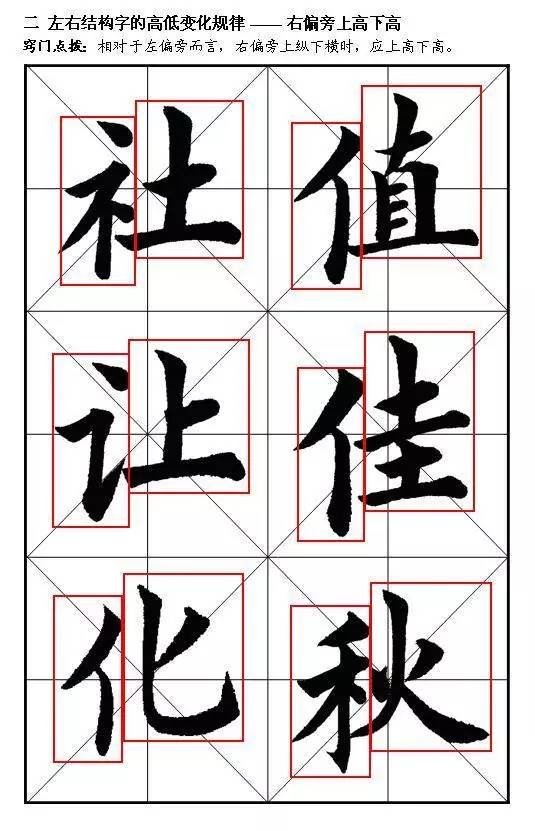
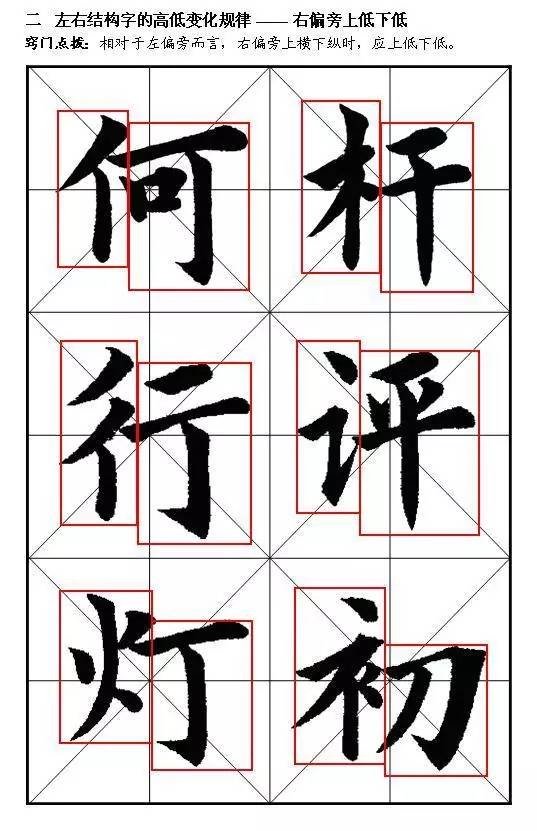
2. The combination rules of the left-center-right structure
(1) The law of width and narrowness ratio of left, middle and right structural characters
Since most of these characters add a left radical to the left part of the left and right structural characters, the characteristics of the left-center-right structural characters are two left radicals plus a right radical. When there is a horizontal main stroke in the right radical, the width to narrow ratio is 1:1:2. When writing, compress the left and middle parts to the left half of the square, leaving the right half to write the right radical; when there is a vertical main pen in the right radical, the width to narrow ratio becomes 1:1:1. , when written, the left and right parts are symmetrical with the middle as the axis. Pay attention to leaving appropriate space on the left and right sides, and do not squeeze to both sides to cause the whole thing to become loose.
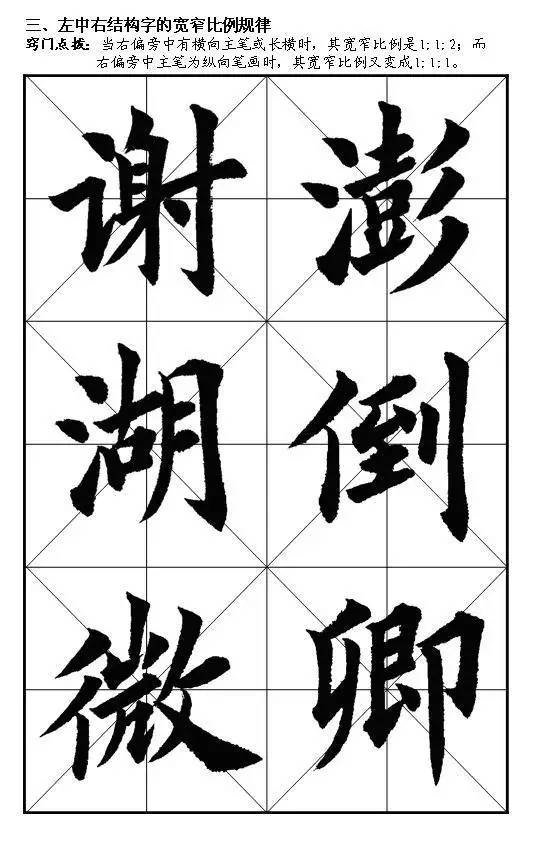
2. The changing rules of the left-center-right structure
(2) The law of height changes of left, middle and right structural characters (still the law of horizontal contraction and vertical expansion)
1. High in the middle, low on both sides - vertical strokes in the middle
2. Low in the middle, high on both sides - horizontal strokes in the middle
3. The middle left is high, the right is low - the right is next to the right ear (start the horizontal stroke)
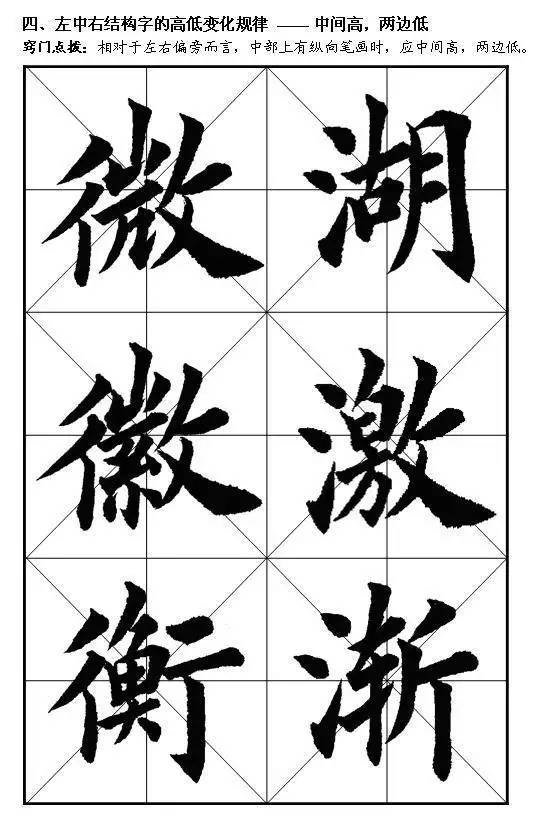
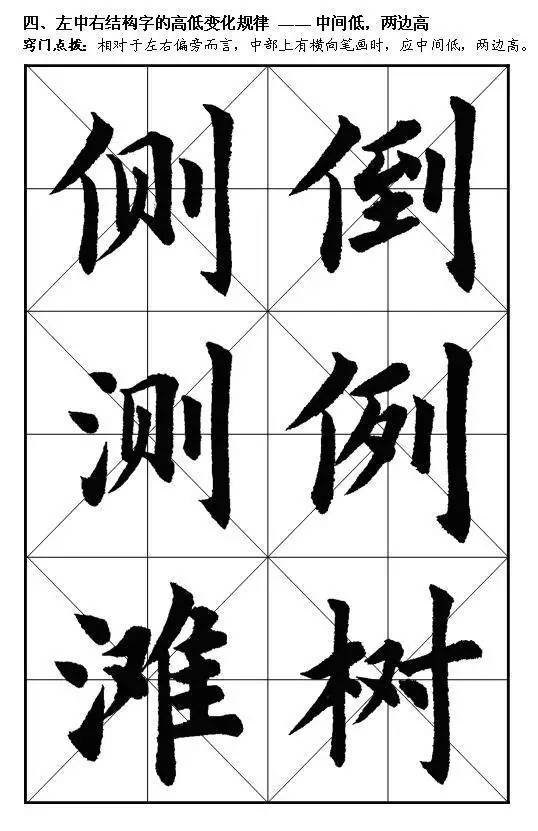
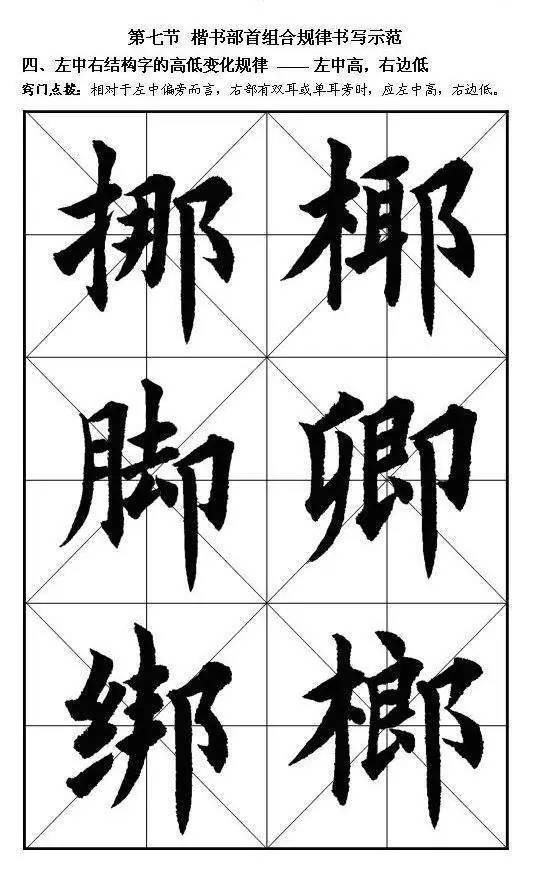
3. Combination rules of upper and lower, upper, middle and lower structural characters
(1) In the upper-lower, upper-middle-lower structure, characters with horizontal strokes in the middle (such as long horizontal strokes, horizontal hooks, and left strokes) should be written in a diamond shape.
(2) In the upper-lower, upper-middle-lower structure, words with horizontal strokes (such as long horizontal strokes and horizontal hooks) on the top and no diagonal strokes or vertical hooks on the bottom should be written in an inverted trapezoid shape.
(3) In the upper and lower, upper, middle and lower structures, characters with oblique strokes, vertical hooks, or bottoms with the character heart, four points, children, clothes, or folded characters should be written in a trapezoid shape.
